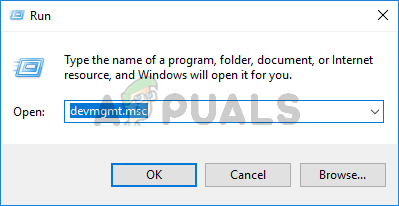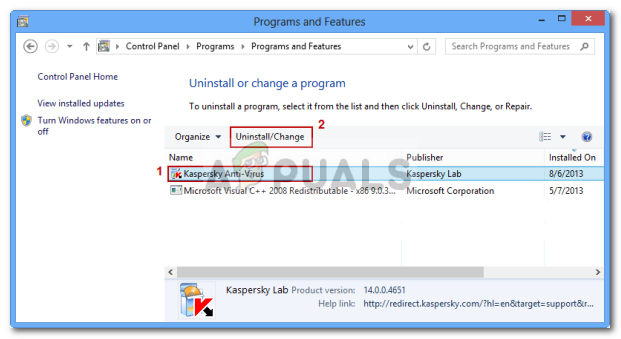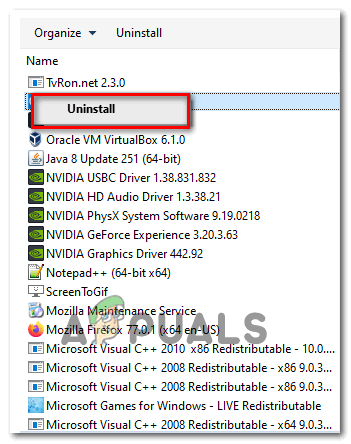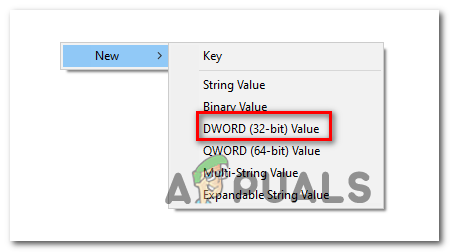As it turns out, there are several different causes that might end up causing this particular BSOD:
Method 1: Uninstalling IDE / ADA / ATAPI Controllers
As it turns out, one of the most common culprits that will end up causing this type of BSOD is a lopping iaStor.sys file that ends up producing a critical crash. As most affected users have reported, this happens due to an inconsistency with the IDE / ATA / ATAPI controllers. If this scenario is applicable, you should be able to fix this problem by using Device Manager to uninstall every IDE, ATA, and ATAPI driver in order to force your operating system to install the generic equivalents. In most cases, users encountering the 0x0000007F error have reported that the BSODs stopped after uninstalling their dedicated IDE, ATA or ATAPI drivers. Here are step by step instructions guide on doing this: In case the same problem is still occurring even after you uninstalled the dedicated drivers and replaced them with generic equivalents, move down to the next potential fix below.
Method 2: Disabling / Uninstalling the 3rd party AV (if applicable)
As it turns out, there are several overprotective Antivirus suites that might very well be facilitating the 0x0000007F BSOD by blocking an essential kernel process due to a false positive. This is commonly reported to happen with McAfee Internet Security, but there might be other 3rd party suites that will cause the same behavior. If this scenario is applicable, you should be able to fix this critical Blue Screen of Death by disabling the real-time protection or uninstalling the 3rd party suite altogether. Start simple by disabling real-time protection and see if the BSOD stops occurring. But keep in mind that this operation will be different depending on the 3rd party suite that you’re using. However, in most cases, you should be able to disable the real-time protection directly from the taskbar icon. Once you disable the real-time protection, monitor the situation, and see if the BSOD returns, if it does and you’re using an AV suite that also includes a firewall component, keep in mind that the same security rules might remain in place even after you disable the real-time protection. In this case, the only way to eliminate your 3rd party AV suite from the culprit list is to simply uninstall it and see if the BSODs stop occurring. Here’s a quick guide on how to do this: In case the same problem is still occurring, move down to the next potential fix below.
Method 3: Uninstall HP Credentials Manager (if applicable)
If you use an HP laptop or a connected device and you have previously installed HP Credentials Manager or HP Protect Tools Security Manager Suite, there’s a high chance that you’re seeing these types of BSODs due to extremely high CPU and GPU temperatures. Even though both of these suites are genuinely developed and maintained by HP, they are both huge memory hoggers and known to cause massive temperature spikes (especially with older CPU models). There are documented cases when this utility ends up hogging over 50% of CPU resources and raising the temperature with more than 20 degrees. In case this scenario is applicable, you should be able to stop these apparently random BSODs from occurring by uninstalling HP Credentials Manager or HP Protect Tool Security Manager Suite (depending on the suite you have installed): Note: Keep in mind that these two tools are in no way essential. The functionality offered by HP Credential Manager is already present natively on Windows (Credential Manager). And as for HP Protect Tool Security Manager Suite, it’s inferior to Windows Defender and a huge memory hogger. In case the same problem is still occurring, move down to the next potential fix below.
Method 4: Adding the KStackMinFree value (if applicable)
In case you’re seeing this error when running Symantec Antivirus or Norton Antivirus, it’s very likely that the issue is occurring due to the fact that your computer lacks sufficient kernel space to process kernel-more drivers. When Symantec Antivirus begins a system scan or examines a file for viruses, it will request file access from the system. Over time, these types of requests can add to the kernel space that your computer consumes until it’s too full to function properly. If this scenario is applicable, you should be able to fix this issue by using the Registry Editor to add the KStackMinFree value to the registry. What this value does it it specifies the minimum kernel space that must be available for Symantec Antivirus or Norton Antivirus system real-time protection to request file access. In case you are indeed using one of these two security suites, follow the instructions below to create the KStackMinFree value using Registry Editor in and fix the 0x0000007F BSOD: In case the same problem is still occurring, move down to the next potential fix below.
Method 5: Forcing a Repair Install
If none of the instructions below have worked for you, it’s likely that you’re dealing with an underlying system file corruption that you will not be able to fix conventionally. In this case, you should be able to fix the problem by resetting every Windows component in order to ensure that there aren’t any corrupted OS files that might end up causing this type of BSOD. When it comes to doing this, you have two options that you can choose from:
Repair Install (in-place repair) – This operation should be the preferred approach if you have a compatible Windows installation media to use. It allows you to reset every relevant Windows component without the deletion of your personal files. Even more, this procedure will not touch, application games, and even some user preferences.Clean install (in-place reinstall) – This is the easier procedure out of the bunch as you don’t need a compatible installation media and you can deploy this operation directly from the GUI Windows menu. But keep in mind that unless you back up your data in advance, you run the risk of losing every personal file, game, and application present on the OS drive.
[FIX] Windows Update - KB5000802 Blue Screen of Death (BSOD)How to Fix Memory_Management Error (Blue Screen of Death) on WindowsFix: fltmgr.sys Blue Screen of Death[Fix] ‘Microsoft Game Input’ Causing Blue Screen of Death on Windows 11










